強力器材設備列表
Equipments of Megaforce StudioConsole
在聲音製作大量數位化的時代,我們總可以看到各式處理聲音的軟體效果器出現。儘管如此,我們相信類比線路的溫度還是難以被冷冰冰的計算取代。我們擁有製作出無數白金唱片的SSL4000G Plus 系列大型類比控台,也有SSL頂級9000J 系列控台,不管是錄音或是混音,讓你從打開控台的那一刻就是好聲音。Solid-State Logic SL-4064G Plus SE
 The SSL 4000 G-Series are the most popular among mixing engineers in Rock and Pop genres. Notable mixing engineers using the 4000-Series are Bob Clearmountain, Chris Lord-Alge, Tom Lord-Alge, Andy Wallace, Mark "Spike" Stent, Will Schillinger and Alan Moulder. SSL claim that the 4000 has been the mixer behind more platinum selling albums than all other consoles combined.
The SSL 4000 G-Series are the most popular among mixing engineers in Rock and Pop genres. Notable mixing engineers using the 4000-Series are Bob Clearmountain, Chris Lord-Alge, Tom Lord-Alge, Andy Wallace, Mark "Spike" Stent, Will Schillinger and Alan Moulder. SSL claim that the 4000 has been the mixer behind more platinum selling albums than all other consoles combined.
Solid-State Logic SL-9064J Series
 The 9000 J series have been widely acclaimed for use in R&B, Classical and Pop genres. Wyclef Jean, formerly of the Fugees, has equipped his Platinum Sound studio with two control rooms, one of them was the famous J-series.
The 9000 J series have been widely acclaimed for use in R&B, Classical and Pop genres. Wyclef Jean, formerly of the Fugees, has equipped his Platinum Sound studio with two control rooms, one of them was the famous J-series.
Sony MXP-3036
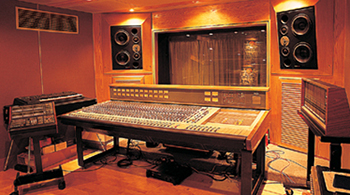 The MXP-3000 series console is a versatile, in-line, professional mixing console which is intended for use in recording or broadcast applications. The console design provides maximum flexibility, and allows the user to select the exact configuration that best meets his/her needs.
The MXP-3000 series console is a versatile, in-line, professional mixing console which is intended for use in recording or broadcast applications. The console design provides maximum flexibility, and allows the user to select the exact configuration that best meets his/her needs.
Monitors
要建立一個有效的溝通,就必須有完善的表達和理解。在聲音工程中,監聽喇叭就是作品的嘴,碰上上工程師靈敏的耳朵,一來一往製作出最完美的聲音。我們擁有歐美錄音室設計大師 Andy Munro先生所設計的良好聲學環境,搭配多款喇叭來監聽,不管是成音、配音或音樂製作,都能清楚聽到聲音中的每一個細節。YAMAHA NS-10M Studio
 The Yamaha NS-10M Studio is a loudspeaker that became a standard nearfield studio monitor in the music industry among rock and pop recording engineers. Originally launched in 1978 as the NS-10 speaker, it started life as a bookshelf speaker destined for the domestic environment. It was poorly received but eventually became a valuable tool with which to mix rock recordings. The speaker has a characteristic white-coloured mid–bass drive unit. It was said to have a harsh treble response. Yamaha responded to this by redesigning the crossover and tweeter to give a smoother treble response. At the same time the company altered the front-baffle logo so that it was legible when the speaker was placed horizontally, the generally preferred method of use. This tweaked design, known as the NS-10M Studio
The Yamaha NS-10M Studio is a loudspeaker that became a standard nearfield studio monitor in the music industry among rock and pop recording engineers. Originally launched in 1978 as the NS-10 speaker, it started life as a bookshelf speaker destined for the domestic environment. It was poorly received but eventually became a valuable tool with which to mix rock recordings. The speaker has a characteristic white-coloured mid–bass drive unit. It was said to have a harsh treble response. Yamaha responded to this by redesigning the crossover and tweeter to give a smoother treble response. At the same time the company altered the front-baffle logo so that it was legible when the speaker was placed horizontally, the generally preferred method of use. This tweaked design, known as the NS-10M Studio
Genelec 1031A
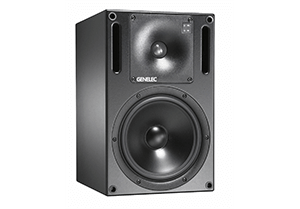 The Genelec 1031A is a two-way active monitor system, consisting of a vented enclosure with a multiple amplifier unit set into the back. The amplifier unit contains a low signal level active crossover, two power amplifiers and overload protection for each driver. This design provides high output, low coloration and broad bandwidth. The system's excellent dispersion and precise imaging together with its compact size make it ideal for near field monitoring, broadcast and TV control rooms, mobile vans, home studios and travelling engineers.
The Genelec 1031A is a two-way active monitor system, consisting of a vented enclosure with a multiple amplifier unit set into the back. The amplifier unit contains a low signal level active crossover, two power amplifiers and overload protection for each driver. This design provides high output, low coloration and broad bandwidth. The system's excellent dispersion and precise imaging together with its compact size make it ideal for near field monitoring, broadcast and TV control rooms, mobile vans, home studios and travelling engineers.
Dynaudio M3
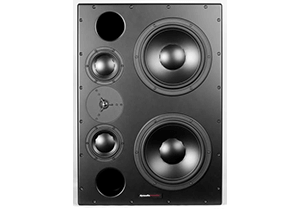 The drivers of the Dynaudio M3 are ferrofluid cooled, a benefit only made possible on low frequency drivers by the use of custom designed ferrofluid compounds applied to very tightly tolerated voice coil gabs - a feature absolutely unique to Dynaudio Acoustics. The result is a very clean, dynamic and powerful speaker in which common problems, such as cone break up, thermal compression and phase misalignment have been almost eliminated. Frequency response is full and flat, and the overall transparency of sound leaves no doubt that the M3 truly advances the art of monitoring at high levels without sacrificing quality at more relaxing volume. Levels from 85 to 120dBA exhibit essentially identical timbre allowing total confidence in mix decisions regardless of monitoring level.
The drivers of the Dynaudio M3 are ferrofluid cooled, a benefit only made possible on low frequency drivers by the use of custom designed ferrofluid compounds applied to very tightly tolerated voice coil gabs - a feature absolutely unique to Dynaudio Acoustics. The result is a very clean, dynamic and powerful speaker in which common problems, such as cone break up, thermal compression and phase misalignment have been almost eliminated. Frequency response is full and flat, and the overall transparency of sound leaves no doubt that the M3 truly advances the art of monitoring at high levels without sacrificing quality at more relaxing volume. Levels from 85 to 120dBA exhibit essentially identical timbre allowing total confidence in mix decisions regardless of monitoring level.
Dynaudio M4
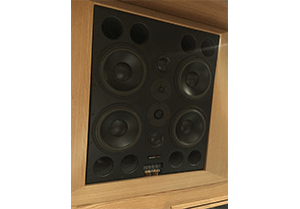 資料待更新...
資料待更新...
Microphone
若說監聽喇叭是作品的嘴巴,那麥克風就是作品的耳朵了。想要你的作品溫柔一點,那就讓他用溫柔的耳朵聽;希望作品力道多一點,就找隻兇悍的麥克風吧。強力錄音室收藏了各式麥克風,從經典到現代,需要什麼樣的聲音,我們應有盡有。Neumann U 47 Fet i
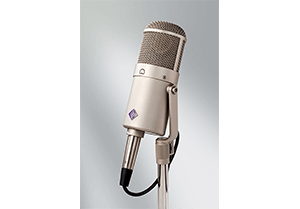 The Neumann U47 FET Collector's Edition brings the epic sound of one of the most recorded microphones in history into your studio. Neumann went back to the schematics and production notes from the original U47 FET to bring you the wide dynamic range, detailed sound, and fast transient response of the original.
The Neumann U47 FET Collector's Edition brings the epic sound of one of the most recorded microphones in history into your studio. Neumann went back to the schematics and production notes from the original U47 FET to bring you the wide dynamic range, detailed sound, and fast transient response of the original.
Neumann U 67
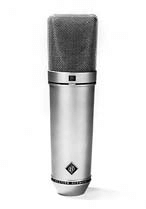 The Neumann U 67 is a developed multi-purpose studio microphone. It has an attractive shape and possesses first-class transmission properties and a number of new advantages. The U 67 can be used in a multitude of cases in recording, brocasting and sound reproduction.
The Neumann U 67 is a developed multi-purpose studio microphone. It has an attractive shape and possesses first-class transmission properties and a number of new advantages. The U 67 can be used in a multitude of cases in recording, brocasting and sound reproduction.
Neumann U 87 Ai
 The Neumann U 87 Ai is the modern incarnation of a classic microphone. Introduced in 1967, the U 87 gained instant favor with engineers, producers, and their clients; by the mid '70s it was a staple in every world-class recording studio. And it still is. Walk into a session, and you'll see 87s everywhere. On piano, vocals, toms, overheads, guitar cabs, brass, strings, congas — you name it. The mic's popularity is easy to understand: it ushered in a new era of audio fidelity and reliability, and with three selectable polar patterns (cardioid, omnidirectional, and figure-8), plus a switchable highpass filter and 10dB pre-attenuation pad, the mic is incredibly versatile, and an ideal choice for a broad range of recording techniques. The Neumann U 87 Ai is the industry-standard large-diaphragm condenser mic.
The Neumann U 87 Ai is the modern incarnation of a classic microphone. Introduced in 1967, the U 87 gained instant favor with engineers, producers, and their clients; by the mid '70s it was a staple in every world-class recording studio. And it still is. Walk into a session, and you'll see 87s everywhere. On piano, vocals, toms, overheads, guitar cabs, brass, strings, congas — you name it. The mic's popularity is easy to understand: it ushered in a new era of audio fidelity and reliability, and with three selectable polar patterns (cardioid, omnidirectional, and figure-8), plus a switchable highpass filter and 10dB pre-attenuation pad, the mic is incredibly versatile, and an ideal choice for a broad range of recording techniques. The Neumann U 87 Ai is the industry-standard large-diaphragm condenser mic.
Neumann KM 84
 The Neumann KM 84 is a small-diaphragm FET condenser with a fixed Cardioid pickup pattern. Known for having an exceptionally flat frequency response and its ability to maintain its cardioid pickup pattern across the frequency spectrum. It was also the world’s first phantom-powered microphone, built to run on 48v DC. It's design goal was to be as small as possible; the model name ‘KM’ stands for Kleine Mikrofon (“small microphone”)
The Neumann KM 84 is a small-diaphragm FET condenser with a fixed Cardioid pickup pattern. Known for having an exceptionally flat frequency response and its ability to maintain its cardioid pickup pattern across the frequency spectrum. It was also the world’s first phantom-powered microphone, built to run on 48v DC. It's design goal was to be as small as possible; the model name ‘KM’ stands for Kleine Mikrofon (“small microphone”)
Neumann KM 184
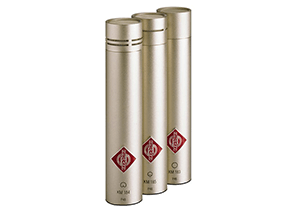 The Neumann KM 184 is a transformerless FET pencil condenser mic. Part of Neumann’s “Series 180” mics, it has a cardioid pickup pattern; Need a microphone to record percussion, cymbals or brass instruments? The KM184 is capable of handling high sound pressure levels with ease - as high as 138dB before overloading. But it's also extremely quiet, making it an excellent choice for capturing the subtle nuances of acoustic guitars and orchestral instruments.
The Neumann KM 184 is a transformerless FET pencil condenser mic. Part of Neumann’s “Series 180” mics, it has a cardioid pickup pattern; Need a microphone to record percussion, cymbals or brass instruments? The KM184 is capable of handling high sound pressure levels with ease - as high as 138dB before overloading. But it's also extremely quiet, making it an excellent choice for capturing the subtle nuances of acoustic guitars and orchestral instruments.
Neumann TLM 103
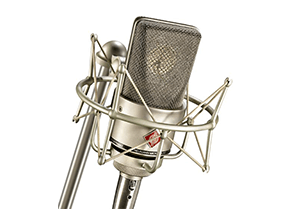 The Neumann TLM 103 large-diaphragm cardioid condenser mic boasts a capsule drawn from the U 87 and transformerless circuitry - not to mention classic Neumann sound! The TLM 103 is a great mic for any pro or project studio use and, due to its minimal self-noise, it's been used for classical recordings with a wide dynamic range, sampling (especially for very low amplitude sources), and Foley work. This mic is also robust enough for the live stage, as Jack White has employed the TLM 103 to mic amps in live situations.
The Neumann TLM 103 large-diaphragm cardioid condenser mic boasts a capsule drawn from the U 87 and transformerless circuitry - not to mention classic Neumann sound! The TLM 103 is a great mic for any pro or project studio use and, due to its minimal self-noise, it's been used for classical recordings with a wide dynamic range, sampling (especially for very low amplitude sources), and Foley work. This mic is also robust enough for the live stage, as Jack White has employed the TLM 103 to mic amps in live situations.
Neumann M-149
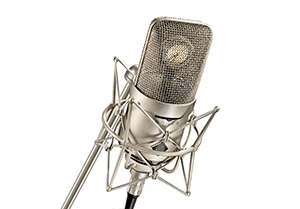 The perfect combination of vintage sound and modern technology, the M 149 Tube is the first tube mic designed by Neumann in over 30 years. Based on the classic U 47, the M 149 gives you unmistakable tube warmth that audiences love. At the same time, you get the clarity and precision of a modern capsule. It has the lowest self-noise of any tube microphone on the market. The M 149 Tube will add true flexibility to your recordings with nine polar patterns to choose from and a 7-position highpass filter.
The perfect combination of vintage sound and modern technology, the M 149 Tube is the first tube mic designed by Neumann in over 30 years. Based on the classic U 47, the M 149 gives you unmistakable tube warmth that audiences love. At the same time, you get the clarity and precision of a modern capsule. It has the lowest self-noise of any tube microphone on the market. The M 149 Tube will add true flexibility to your recordings with nine polar patterns to choose from and a 7-position highpass filter.
Sony C-800G
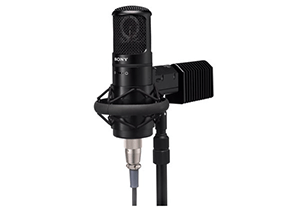 The Sony C-800G a high-end tube vocal microphone. The mic was made popular for pop and R&B production by users like Dr. Dre, Mariah Carey, R. Kelly, Kelly Clarkson and many others. It captures the silky breathiness of vocals without a hint of shrillness. It's also a revelation on acoustic guitar. In fact, the C-800G's effectively non-existent noise floor and high sensitivity let you use it on almost anything with astonishing results. The vacuum tube — a hand-selected 6AU6 — has its own onboard cooling system. The large dual diaphragm capsule features electronically selectable cardioid and omnidirectional polar patterns.
The Sony C-800G a high-end tube vocal microphone. The mic was made popular for pop and R&B production by users like Dr. Dre, Mariah Carey, R. Kelly, Kelly Clarkson and many others. It captures the silky breathiness of vocals without a hint of shrillness. It's also a revelation on acoustic guitar. In fact, the C-800G's effectively non-existent noise floor and high sensitivity let you use it on almost anything with astonishing results. The vacuum tube — a hand-selected 6AU6 — has its own onboard cooling system. The large dual diaphragm capsule features electronically selectable cardioid and omnidirectional polar patterns.
Audio-Technica AT4033
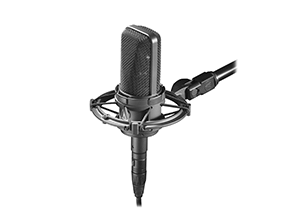 The AT4033 has been producing great results for over 20 years. Its fast response, low noise, and strong up-front sound have made it a studio standard for everything from brass instruments, vocals, acoustic guitars, stringed instruments, loud electric guitar amps, and anything else. It's well known for offering stellar performance for bluegrass as well. It really can be used for almost anything.
The AT4033 has been producing great results for over 20 years. Its fast response, low noise, and strong up-front sound have made it a studio standard for everything from brass instruments, vocals, acoustic guitars, stringed instruments, loud electric guitar amps, and anything else. It's well known for offering stellar performance for bluegrass as well. It really can be used for almost anything.
AKG C414 B-ULS
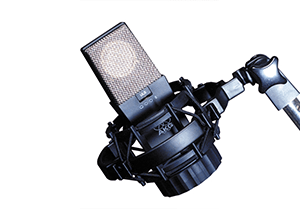 The AKG C414 B-ULS is The reference microphone for almost all comparative microphone tests and one of the most used condenser microphones in the world. It is the microphone of choice for miking up vocals, grand pianos, percussions, and any other sound sources with complex waveforms. A gold-sputtered 1-inch dual-diaphragm and Ultra Linear Series electronics combine to provide an extremely smooth frequency response.
The AKG C414 B-ULS is The reference microphone for almost all comparative microphone tests and one of the most used condenser microphones in the world. It is the microphone of choice for miking up vocals, grand pianos, percussions, and any other sound sources with complex waveforms. A gold-sputtered 1-inch dual-diaphragm and Ultra Linear Series electronics combine to provide an extremely smooth frequency response.
AKG D112
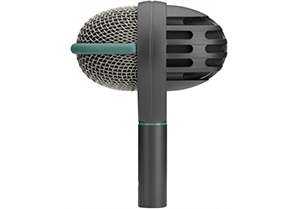 The D112 has earned a well-deserved reputation worldwide as the best kick drum microphone ever made. Heavy-footed drummers are thrilled with the D112´s ability to handle up to 160dB SPL without any distortion. The diaphragm has a very low resonance frequency to maintain a solid and powerful response below 100Hz. A narrow band presence boost at 4kHz punches through dense mixes with forceful impact - no additional EQ needed!
The D112 has earned a well-deserved reputation worldwide as the best kick drum microphone ever made. Heavy-footed drummers are thrilled with the D112´s ability to handle up to 160dB SPL without any distortion. The diaphragm has a very low resonance frequency to maintain a solid and powerful response below 100Hz. A narrow band presence boost at 4kHz punches through dense mixes with forceful impact - no additional EQ needed!
Shure SM7a
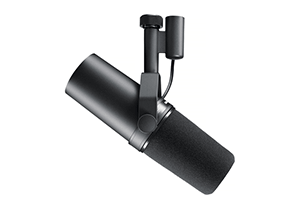 The Model SM7A is a dynamic microphone with a very smooth, flat, wide-range frequency response. It is meticulously designed for the most exacting music and speech requirements in professional audio applications. The cartridge is designed for excellent shielding against electromagnetic hum generated by computer monitors, neon lights, and other electrical devices.
The Model SM7A is a dynamic microphone with a very smooth, flat, wide-range frequency response. It is meticulously designed for the most exacting music and speech requirements in professional audio applications. The cartridge is designed for excellent shielding against electromagnetic hum generated by computer monitors, neon lights, and other electrical devices.
Shure SM57
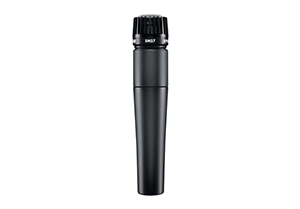 The legendary Shure SM57 is exceptional for musical instrument pickup and vocals. With its bright, clean sound and contoured frequency response, the SM57 is ideal for live sound reinforcement and recording. The SM57 has an extremely effective cardioid pickup pattern that isolates the main sound source while minimizing background noise. In the studio, it is excellent for recording drums, guitar, and woodwinds. Outstanding performance, reliability, and application diversity make this "workhorse" the choice of performers, producers, and sound engineers worldwide.
The legendary Shure SM57 is exceptional for musical instrument pickup and vocals. With its bright, clean sound and contoured frequency response, the SM57 is ideal for live sound reinforcement and recording. The SM57 has an extremely effective cardioid pickup pattern that isolates the main sound source while minimizing background noise. In the studio, it is excellent for recording drums, guitar, and woodwinds. Outstanding performance, reliability, and application diversity make this "workhorse" the choice of performers, producers, and sound engineers worldwide.
Shure Beta52
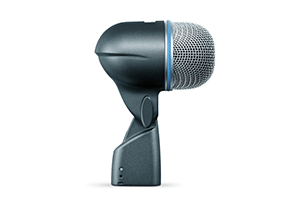 The Shure Beta52 is a high output dynamic microphone with a tailored frequency response designed specifically for kick drums and other bass instruments. It provides superb attack and "punch", and delivers studio quality sound even at extremely high sound pressure levels.
The Shure Beta52 is a high output dynamic microphone with a tailored frequency response designed specifically for kick drums and other bass instruments. It provides superb attack and "punch", and delivers studio quality sound even at extremely high sound pressure levels.
Senheiser MD421
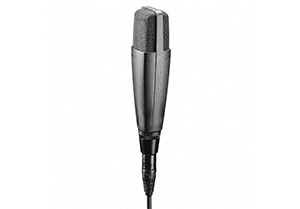 The Senheiser MD421 has a 5-position bass roll-off switch. The “flat” position is marked M for Music; the other extreme is marked “S” for Speech, and cuts the low end by approximately 6dB below 500 Hz. Three intermediate positions are provided. It is an extremely versatile, robust legendary cardioid microphone. Easy handling due to pronounced directivity. Clear sound reproduction for most recording conditions and broadcasting applications.
The Senheiser MD421 has a 5-position bass roll-off switch. The “flat” position is marked M for Music; the other extreme is marked “S” for Speech, and cuts the low end by approximately 6dB below 500 Hz. Three intermediate positions are provided. It is an extremely versatile, robust legendary cardioid microphone. Easy handling due to pronounced directivity. Clear sound reproduction for most recording conditions and broadcasting applications.


 資料待更新...
資料待更新...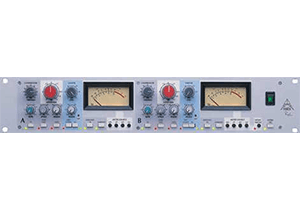 資料待更新...
資料待更新... The AMS RMX16 was the world's first microprocessor-controlled, full-bandwidth, digital reverberator. The unique and lush reverb programs of the RMX16 are instantly recognizable, from U2 and Peter Gabriel to Radiohead and Rihanna. Heard on hundreds — if not thousands — of seminal recordings from the 1980s onward, the RMX16 is still found in nearly every major recording studio the world over.
The AMS RMX16 was the world's first microprocessor-controlled, full-bandwidth, digital reverberator. The unique and lush reverb programs of the RMX16 are instantly recognizable, from U2 and Peter Gabriel to Radiohead and Rihanna. Heard on hundreds — if not thousands — of seminal recordings from the 1980s onward, the RMX16 is still found in nearly every major recording studio the world over. 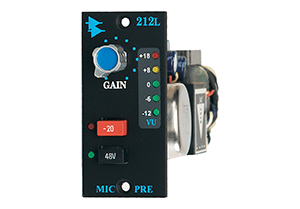 The 212L mic-pre all discrete circuitry features the API 2520 op-amp, the RE 115 K input and the AP-2623 output transformer. A -20 dB pad is provided, allowing the level feeding the mic transformer to be reduced by 20 dB, while keeping the proper load on both the mic and transformer. 48V Phantom power can be locally switched on or off via the front panel switch. An LED VU meter provides a true VU indication of the mic pre output level. The low noise floor, together with a clip point over +28 dBm, makes this preamp suitable for the most extreme applications requiring the highest quality audio.
The 212L mic-pre all discrete circuitry features the API 2520 op-amp, the RE 115 K input and the AP-2623 output transformer. A -20 dB pad is provided, allowing the level feeding the mic transformer to be reduced by 20 dB, while keeping the proper load on both the mic and transformer. 48V Phantom power can be locally switched on or off via the front panel switch. An LED VU meter provides a true VU indication of the mic pre output level. The low noise floor, together with a clip point over +28 dBm, makes this preamp suitable for the most extreme applications requiring the highest quality audio.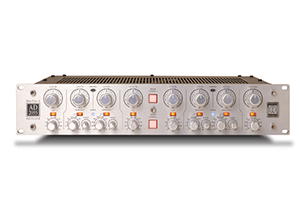 The AD2055 combines 100% discrete, pure class A signal amplifiers with state-of-the-art passive and active filter topologies. The AD2055's unique circuitry delivers very high resolution transient detail at the operational extremes of real world equalization demands. The AD2055 auto-bias DC servo loop control eliminates the need for all interstage capacitor coupling. The AD2055 breathes life into all musical performances!
The AD2055 combines 100% discrete, pure class A signal amplifiers with state-of-the-art passive and active filter topologies. The AD2055's unique circuitry delivers very high resolution transient detail at the operational extremes of real world equalization demands. The AD2055 auto-bias DC servo loop control eliminates the need for all interstage capacitor coupling. The AD2055 breathes life into all musical performances!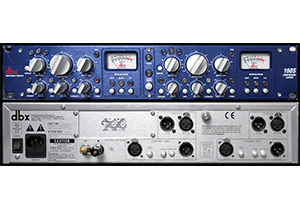 資料待更新...
資料待更新...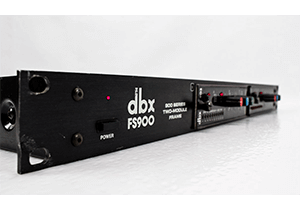 資料待更新...
資料待更新...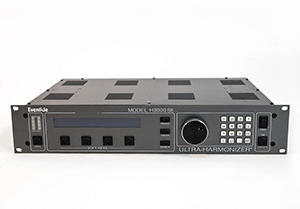 The H3000 Ultra-Harmonizer® is a family or products based around a mult-purpose programmable, digital audio signal processor.The H3000-SE is capable of creating effects ranging from full stereo pitch changes, delays, reverbs, and more.they have full stereo pitch change. They also are digital reverbs. And they’re a lot more. The Eventide H3000 is capable of creating efects you’ve never herd before. The Eventide H3000 is fully MIDI controllable, with click less, real-time MIDI control.
The H3000 Ultra-Harmonizer® is a family or products based around a mult-purpose programmable, digital audio signal processor.The H3000-SE is capable of creating effects ranging from full stereo pitch changes, delays, reverbs, and more.they have full stereo pitch change. They also are digital reverbs. And they’re a lot more. The Eventide H3000 is capable of creating efects you’ve never herd before. The Eventide H3000 is fully MIDI controllable, with click less, real-time MIDI control.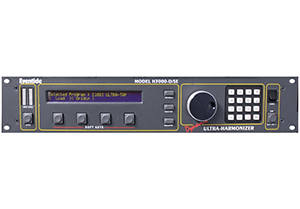 The H3000 Ultra-Harmonizer® is a family or products based around a mult-purpose programmable, digital audio signal processor.
The H3000 Ultra-Harmonizer® is a family or products based around a mult-purpose programmable, digital audio signal processor. The Eventide 4000 Ultra-Harmonizers are multipurpose programmable digital audio signal processors with pitch change capability. It is considered by some to be the greatest in a line of pitch changing special effects units stretching back to before most audio manufacturers ever heard of digital. The DSP4000 is capable of creating effects you've never heard before, with built-in patch editor to let you create your own effects algorithms.
The Eventide 4000 Ultra-Harmonizers are multipurpose programmable digital audio signal processors with pitch change capability. It is considered by some to be the greatest in a line of pitch changing special effects units stretching back to before most audio manufacturers ever heard of digital. The DSP4000 is capable of creating effects you've never heard before, with built-in patch editor to let you create your own effects algorithms. 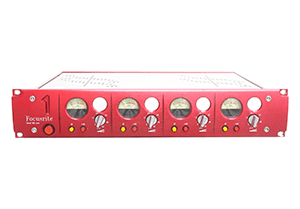 The Focusrite Red 1 500 Series mic preamp brings legendary Red Series mojo to the popular Lunchbox format. The Red 1 pre became an essential kit in the world's top studios, thanks to its unique signature sound and its ability to perform flawlessly with any microphone. With 66dB of gain, you can use the Red 1 500 Series pre with your condensers, dynamics, and ribbon mics, too.
The Focusrite Red 1 500 Series mic preamp brings legendary Red Series mojo to the popular Lunchbox format. The Red 1 pre became an essential kit in the world's top studios, thanks to its unique signature sound and its ability to perform flawlessly with any microphone. With 66dB of gain, you can use the Red 1 500 Series pre with your condensers, dynamics, and ribbon mics, too.  The Focusrite Red 3 is a Class A VCA-based dual mono/stereo compressor/limiter. The compressor/limiter features a single Class A VCA to achieve truly high class compression and limiting free of the usual compromises. The success of the design is attested to by the Red 3’s TEC award for Outstanding Technical Achievement in the Signal Processing Technology category.
The VCA used is a proprietary Focusrite design, fully discrete and balanced, offering superb low noise and distortion, and excellent common-mode rejection. In order to separate compression and limiting, the side-chain electronics contain three VCAs in series to generate compression and limiting control voltages which drive the main VCA. The result is true compression followed by limiting, rather than the more common characteristic of compression that turns into limiting. The side-chain electronics are class A, ensuring superb transient response. Both compression and limiting therefore offer true peak response, not averaging RMS response.
The Focusrite Red 3 is a Class A VCA-based dual mono/stereo compressor/limiter. The compressor/limiter features a single Class A VCA to achieve truly high class compression and limiting free of the usual compromises. The success of the design is attested to by the Red 3’s TEC award for Outstanding Technical Achievement in the Signal Processing Technology category.
The VCA used is a proprietary Focusrite design, fully discrete and balanced, offering superb low noise and distortion, and excellent common-mode rejection. In order to separate compression and limiting, the side-chain electronics contain three VCAs in series to generate compression and limiting control voltages which drive the main VCA. The result is true compression followed by limiting, rather than the more common characteristic of compression that turns into limiting. The side-chain electronics are class A, ensuring superb transient response. Both compression and limiting therefore offer true peak response, not averaging RMS response.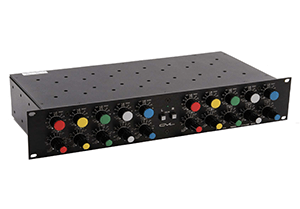 With astonishing precision and sonic accuracy, the GML 8200 Parametric Equalizer has been an industry standard for over two decades. Its operational characteristics have been honed through many years of use in the most critical recording and mixing situations and can be found on virtually every major recording studio’s stereo bus. Each of the five broadly-overlapping bands offers 15dB of Boost or Cut and adjustable bandwidth (or “Q”) from 0.4 to 4. The lowest and highest bands also can be switched to Shelf mode. Quite simply, the 8200 is the archetype Stereo Parametric Equalizer. Its extraordinary resolution, benchmark transparency, generous headroom, and surgical precision have been the reference for many other equalizers but exceeded by no other.
With astonishing precision and sonic accuracy, the GML 8200 Parametric Equalizer has been an industry standard for over two decades. Its operational characteristics have been honed through many years of use in the most critical recording and mixing situations and can be found on virtually every major recording studio’s stereo bus. Each of the five broadly-overlapping bands offers 15dB of Boost or Cut and adjustable bandwidth (or “Q”) from 0.4 to 4. The lowest and highest bands also can be switched to Shelf mode. Quite simply, the 8200 is the archetype Stereo Parametric Equalizer. Its extraordinary resolution, benchmark transparency, generous headroom, and surgical precision have been the reference for many other equalizers but exceeded by no other.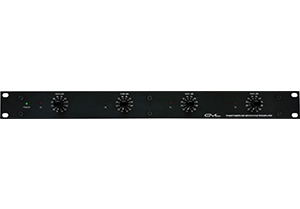 The GML8304 Four-Channel Microphone Preamplifier expands upon the time-tested 8300 Mic Pre, world renowned for its life-like realism, high resolving power, and reference-standard transparency. Whether you use it for recording or in a live performance situation that demands ultimate performance, the 8304 will deliver pristine sound with flexible control. From the legendary George Massenburg Labs comes the GML8304 Four-Channel Microphone Preamplifier, a multi-channel version of the famed 8300 Mic Pre, considered a world standard for studio and demanding live performance use.
The GML8304 Four-Channel Microphone Preamplifier expands upon the time-tested 8300 Mic Pre, world renowned for its life-like realism, high resolving power, and reference-standard transparency. Whether you use it for recording or in a live performance situation that demands ultimate performance, the 8304 will deliver pristine sound with flexible control. From the legendary George Massenburg Labs comes the GML8304 Four-Channel Microphone Preamplifier, a multi-channel version of the famed 8300 Mic Pre, considered a world standard for studio and demanding live performance use.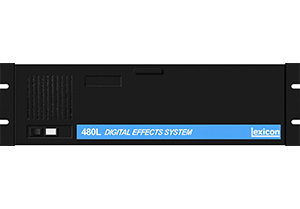 The Lexicon 480L is engineered for the emerging all – digital production environment. Digital audio places strict requirements on every link in the signal chain, and the Lexicon 480L meets those requirements. With its unique 18 bit linear A/D and D/A converters, the Lexicon 480L produces a dynamic range of 98 dB in the wet signal path. It is probably the only effects system available that doesn’t raise the noise floor of a digital master. And the PCM 1610/1630 compatible digital I/O interface lets you add true stereo ambience and effects without leaving the digital domain.
The Lexicon 480L is engineered for the emerging all – digital production environment. Digital audio places strict requirements on every link in the signal chain, and the Lexicon 480L meets those requirements. With its unique 18 bit linear A/D and D/A converters, the Lexicon 480L produces a dynamic range of 98 dB in the wet signal path. It is probably the only effects system available that doesn’t raise the noise floor of a digital master. And the PCM 1610/1630 compatible digital I/O interface lets you add true stereo ambience and effects without leaving the digital domain.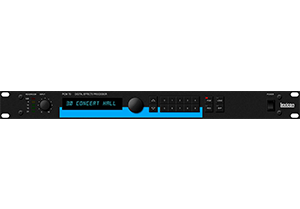 The Lexicon PCM 70 Digital Effects Processor gives you access to the same astonishing digital effects used by the world’s top artists and studios – all in a compact single-space rack mount unit. The Lexicon PCM 70 offers more than 40 digital effects and reverb programs, including chorus and echo, resonant chords, multiband delays, rich chamber, rich plate, and concert hall. Add to these the 50 programs you can create and store in user registers, and you have instant access to more than 90 programs.If you have a sequencer, control changes sent to the Lexicon PCM 70 from your keyboard or controller can be recorded and repeated perfectly-every time. A corresponding register feature lets you choose effects or reverb programs remotely, from sequencers, synthesizers, and other MIDI devices. To top it all off, an innovative and uncomplicated user interface ensures that you can access all of this power quickly and easily.
The Lexicon PCM 70 Digital Effects Processor gives you access to the same astonishing digital effects used by the world’s top artists and studios – all in a compact single-space rack mount unit. The Lexicon PCM 70 offers more than 40 digital effects and reverb programs, including chorus and echo, resonant chords, multiband delays, rich chamber, rich plate, and concert hall. Add to these the 50 programs you can create and store in user registers, and you have instant access to more than 90 programs.If you have a sequencer, control changes sent to the Lexicon PCM 70 from your keyboard or controller can be recorded and repeated perfectly-every time. A corresponding register feature lets you choose effects or reverb programs remotely, from sequencers, synthesizers, and other MIDI devices. To top it all off, an innovative and uncomplicated user interface ensures that you can access all of this power quickly and easily.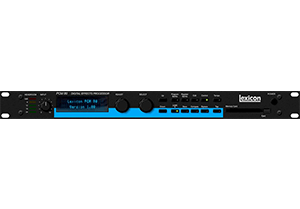 The Lexicon PCM 80 brings you exciting new effects with extensive processing and control capabilities, and uncompromising sonic clarity. The Lexicon PCM 80 contains a built-in library of 200 preset programs that provide a comprehensive array of effects ranging from beautiful and lush to completely wild. The presets are organized into 4 Banks of 50, and functionally grouped for a wide range of applications. Be sure to experiment with all 200 presets to get a feel for the full range of Lexicon PCM 80 capabilities.
The Lexicon PCM 80 brings you exciting new effects with extensive processing and control capabilities, and uncompromising sonic clarity. The Lexicon PCM 80 contains a built-in library of 200 preset programs that provide a comprehensive array of effects ranging from beautiful and lush to completely wild. The presets are organized into 4 Banks of 50, and functionally grouped for a wide range of applications. Be sure to experiment with all 200 presets to get a feel for the full range of Lexicon PCM 80 capabilities.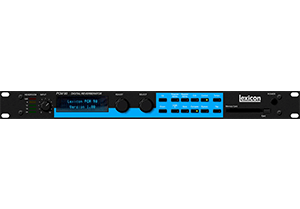 The Lexicon PCM 90 gives you Lexicon’s renowned high-end reverb effects with a powerful new interface that provides easy access to superbly crafted presets as well as a wealth of programming capabilities for the sound designer. For all of the Lexicon PCM 90’s programming power and flexibility, you’ll find the Lexicon PCM 90 simple t0 use. The large, 2-line fluorescent display is easy to see from any angle whether the surroundings are bright or dark. Separate SELECT and ADJUST knobs make program loading and editing quick and easy. There is even a designed special Info mode – press and hold any button to find out what its function is, or to get status information such as the name of the running effect, current tempo rate, etc.
The Lexicon PCM 90 gives you Lexicon’s renowned high-end reverb effects with a powerful new interface that provides easy access to superbly crafted presets as well as a wealth of programming capabilities for the sound designer. For all of the Lexicon PCM 90’s programming power and flexibility, you’ll find the Lexicon PCM 90 simple t0 use. The large, 2-line fluorescent display is easy to see from any angle whether the surroundings are bright or dark. Separate SELECT and ADJUST knobs make program loading and editing quick and easy. There is even a designed special Info mode – press and hold any button to find out what its function is, or to get status information such as the name of the running effect, current tempo rate, etc.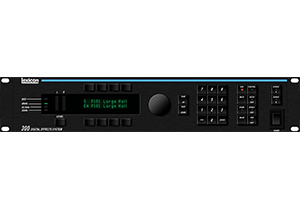 The M300 contains the very best of the Lexicon Sound — with new refinements such as dynamic size parameters in the Reverb and Ambience algorithms. It also includes stereo and mono pitch shifting, delay effects, a mastering algorithm with precision level/balance controls and equalization. These sounds, combined with analog and digital audio I/O, time code based effect change, an internal LFO, and full MIDI automation result in a system that provides new creative options each time you use it.
The M300 contains the very best of the Lexicon Sound — with new refinements such as dynamic size parameters in the Reverb and Ambience algorithms. It also includes stereo and mono pitch shifting, delay effects, a mastering algorithm with precision level/balance controls and equalization. These sounds, combined with analog and digital audio I/O, time code based effect change, an internal LFO, and full MIDI automation result in a system that provides new creative options each time you use it.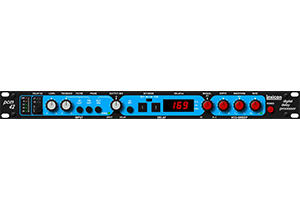 The Lexicon PCM 42 is a high-performance digital delay line/processor that features up to 2.4 seconds of high quality audio delay, expandable to 4.8 seconds with optional memory. Delay times are indicated by a highly accurate numeric display, which provides rapid tracking of ALL changes in delay time. It provides superior audio performance through Lexicon’s proprietary method of analog-to-digital encoding. An increased sampling rate gives wider bandwidth without aliasing effects. In addition, a new “soft knee” limiting circuit eliminates the unpleasant distortion that most digital circuits generate when overloaded.
The Lexicon PCM 42 is a high-performance digital delay line/processor that features up to 2.4 seconds of high quality audio delay, expandable to 4.8 seconds with optional memory. Delay times are indicated by a highly accurate numeric display, which provides rapid tracking of ALL changes in delay time. It provides superior audio performance through Lexicon’s proprietary method of analog-to-digital encoding. An increased sampling rate gives wider bandwidth without aliasing effects. In addition, a new “soft knee” limiting circuit eliminates the unpleasant distortion that most digital circuits generate when overloaded.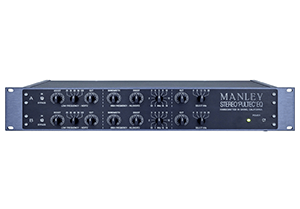 Manley's 'enhanced' Pultec EQs deliver the same sweet sound and control as the vintage original, but with modern circuitry that sets new standards in today's contemporary recording facilities. You can set the EQ to 'flat' positions or bypass it entirely. All boost and cut controls are continuously variable conductive plastic potentiometers for absolutely silent operation and long life. The single rack unit monoblocks occupy one-third of the space of the 'antique Pultecs', an important consideration for allocation of outboard rack space. The rear mounted input switch selects 0 degrees or 180 degrees phase invert for the balanced gold pin XLR input, or you can select the transformerless unbalanced bridging input (1/4" jack). All Enhanced Pultec models feature balanced XLR and 1/4" hi-Z inputs, and balanced XLR outputs. You've heard about the high quality of Manley gear? Believe it! These EQs are amazing!
Manley's 'enhanced' Pultec EQs deliver the same sweet sound and control as the vintage original, but with modern circuitry that sets new standards in today's contemporary recording facilities. You can set the EQ to 'flat' positions or bypass it entirely. All boost and cut controls are continuously variable conductive plastic potentiometers for absolutely silent operation and long life. The single rack unit monoblocks occupy one-third of the space of the 'antique Pultecs', an important consideration for allocation of outboard rack space. The rear mounted input switch selects 0 degrees or 180 degrees phase invert for the balanced gold pin XLR input, or you can select the transformerless unbalanced bridging input (1/4" jack). All Enhanced Pultec models feature balanced XLR and 1/4" hi-Z inputs, and balanced XLR outputs. You've heard about the high quality of Manley gear? Believe it! These EQs are amazing!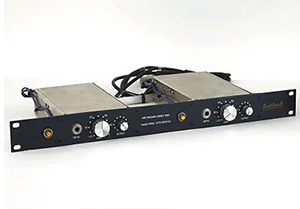 資料待更新...
資料待更新...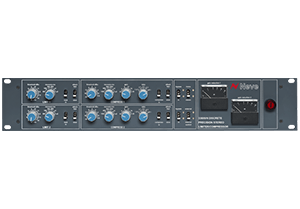 The hallmark 33609 compression sound is very smooth, and extreme settings may be used with the compression or limiting remaining relatively transparent. The 33609 features independent sidechains for the compressor and limiter sections, with similarly independent threshold, recovery and attack controls. The compressor features a selection of ratios from 1.5:1 to 6:1 and a gain make-up control that comes before the limiter. Overall gain reduction is indicated on a moving coil meter. The 33609 Stereo Compressor is often cited as a “desert island” compressor – one which a healthy sampling of the world’s top engineers and producers would choose above all others.
The hallmark 33609 compression sound is very smooth, and extreme settings may be used with the compression or limiting remaining relatively transparent. The 33609 features independent sidechains for the compressor and limiter sections, with similarly independent threshold, recovery and attack controls. The compressor features a selection of ratios from 1.5:1 to 6:1 and a gain make-up control that comes before the limiter. Overall gain reduction is indicated on a moving coil meter. The 33609 Stereo Compressor is often cited as a “desert island” compressor – one which a healthy sampling of the world’s top engineers and producers would choose above all others.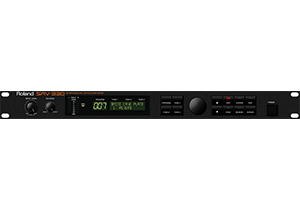 The Roland SRV-330 produces a high-density reverb that you normally wouldn’t expect from a device in this price range. With every stereo algorithm, the internal processing of the left and right channels in the Roland SRV-330 is done independently. This assures that every detail of spatial localisation contained in the input signals is retained even after effects have been applied.
The Roland SRV-330 produces a high-density reverb that you normally wouldn’t expect from a device in this price range. With every stereo algorithm, the internal processing of the left and right channels in the Roland SRV-330 is done independently. This assures that every detail of spatial localisation contained in the input signals is retained even after effects have been applied.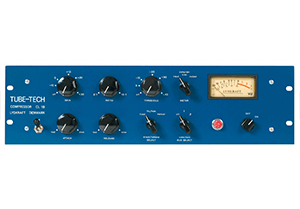 The Tube-Tech CL-1B Compressor, introduced in 1991, is Tube-Tech founder John G. Petersen's take on classic optical compression. The CL-1B has gone on to become an industry standard found in pro studios worldwide. In fact, it's the "go-to" compressor for vocals and bass in LA and Nashville. The reason for its enduring popularity is no mystery: it delivers velvety-smooth, musical-sounding compression while preserving the clarity of the source — even when pushed hard. In operation, the CL-1B is a model of simplicity, offering separate control over ratio, threshold, attack and release. Just start dialing away; you'll immediately hear what it's doing and be able to intuitively zero-in on the perfect settings. It's nearly impossible to make this compressor sound bad!
The Tube-Tech CL-1B Compressor, introduced in 1991, is Tube-Tech founder John G. Petersen's take on classic optical compression. The CL-1B has gone on to become an industry standard found in pro studios worldwide. In fact, it's the "go-to" compressor for vocals and bass in LA and Nashville. The reason for its enduring popularity is no mystery: it delivers velvety-smooth, musical-sounding compression while preserving the clarity of the source — even when pushed hard. In operation, the CL-1B is a model of simplicity, offering separate control over ratio, threshold, attack and release. Just start dialing away; you'll immediately hear what it's doing and be able to intuitively zero-in on the perfect settings. It's nearly impossible to make this compressor sound bad!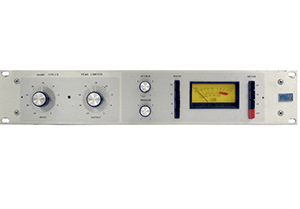 The UREI 1176 LN Peak Limiter is probably best known for the energy and high-class grit it bestows, a musically-pleasing pushing of the tone in the lower mids. Think big. But also think intimate. That’s the 1176’s dichotomic charm. For grabbing vocals and placing them at the front of the mix it’s near impassable. But it’ll also work on just about anything else, from kicks, snares and claps through to synths and even full drum sub-mixes. In addition to the four standard ratios selected via push buttons on the front panel, engineers found out by pushing in all four buttons simultaneously, the unit can be forced to behave in a completely different manner, with seriously assertive results. The high ratio, often distorted results of this ‘all buttons in’ (or ‘Brit’) mode can be explosive on drums and aggressive on bass.
The UREI 1176 LN Peak Limiter is probably best known for the energy and high-class grit it bestows, a musically-pleasing pushing of the tone in the lower mids. Think big. But also think intimate. That’s the 1176’s dichotomic charm. For grabbing vocals and placing them at the front of the mix it’s near impassable. But it’ll also work on just about anything else, from kicks, snares and claps through to synths and even full drum sub-mixes. In addition to the four standard ratios selected via push buttons on the front panel, engineers found out by pushing in all four buttons simultaneously, the unit can be forced to behave in a completely different manner, with seriously assertive results. The high ratio, often distorted results of this ‘all buttons in’ (or ‘Brit’) mode can be explosive on drums and aggressive on bass.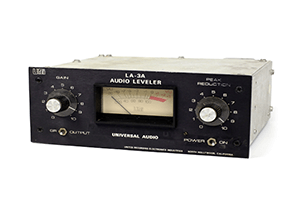 The LA-3A has discrete circuitry and balanced ins and outs, along with adjustable input gain and threshold. it employs the same T4 opto cell for compression as found in the LA-2A. Excellent for vocals, guitars, and mix buss. Great mid-range presence that engineers love. Can be very invisible, or more pronounced, due to continuously variable rotary controls. 'Peak Reduction' increases the sidechain gain - lowering the threshold and increasing compression - while 'Gain' is used to adjust the makeup gain.
The LA-3A has discrete circuitry and balanced ins and outs, along with adjustable input gain and threshold. it employs the same T4 opto cell for compression as found in the LA-2A. Excellent for vocals, guitars, and mix buss. Great mid-range presence that engineers love. Can be very invisible, or more pronounced, due to continuously variable rotary controls. 'Peak Reduction' increases the sidechain gain - lowering the threshold and increasing compression - while 'Gain' is used to adjust the makeup gain. The Yamaha SPX900 is a highly sophisticated digital reverberation and effects system which offers 50 preset effect programs inciuding accurate simulations of natural reverberation and early-reflections, delay and echo effects, gated effects, modulation effects, a versatile compressor, a harmonic exciter, multiple effects which function as several Yamaha SPX900 units in one, freeze (sampling) programs and others. Individual two-band parametric EQ and dynamic filter parameters are provided for each effect program for precise tonal tailoring. In addition to the basic effect and EQ parameters, the Yamaha SPX900 offers a list of “internal parameters” which provide exacting control over the effect sound.
The Yamaha SPX900 is a highly sophisticated digital reverberation and effects system which offers 50 preset effect programs inciuding accurate simulations of natural reverberation and early-reflections, delay and echo effects, gated effects, modulation effects, a versatile compressor, a harmonic exciter, multiple effects which function as several Yamaha SPX900 units in one, freeze (sampling) programs and others. Individual two-band parametric EQ and dynamic filter parameters are provided for each effect program for precise tonal tailoring. In addition to the basic effect and EQ parameters, the Yamaha SPX900 offers a list of “internal parameters” which provide exacting control over the effect sound.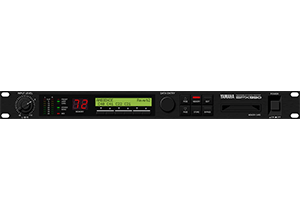 The Yamaha SPX990 Professional sophisticated digital reverberation and effect systems which offers 80 preset effect programs including accurate simultaneous natural reverberation and early reflections, delay and echo effects, gated effects, a versatile compressor, delay harmonic driver, multiple effects, freeze (sampling) programs which can do loop playback and others. The Yamaha SPX990 delivers full, flat frequency response from 20Hz to 20kHz for exceptionally clean, “transparent” effect sound and direct digital interfacing capability making it compatible with the most up-to-date sound system. The preset effect programs can be edited, re-titled and stored in any of the 80 RAM memory locations. Individual 3-band parametric EQ and dynamic filter parameters are provided for each effect program for precise tonal tailoring.
The Yamaha SPX990 Professional sophisticated digital reverberation and effect systems which offers 80 preset effect programs including accurate simultaneous natural reverberation and early reflections, delay and echo effects, gated effects, a versatile compressor, delay harmonic driver, multiple effects, freeze (sampling) programs which can do loop playback and others. The Yamaha SPX990 delivers full, flat frequency response from 20Hz to 20kHz for exceptionally clean, “transparent” effect sound and direct digital interfacing capability making it compatible with the most up-to-date sound system. The preset effect programs can be edited, re-titled and stored in any of the 80 RAM memory locations. Individual 3-band parametric EQ and dynamic filter parameters are provided for each effect program for precise tonal tailoring.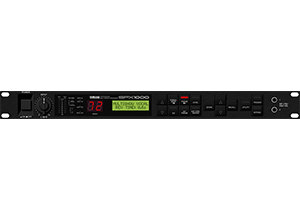 The Yamaha SPX1000 is a highly sophisticated digital reverberation and effects system which offers 40 preset effect programs including accurate simulations of natural reverberation and early-reflections, delay and echo effects, gated effects, modulation effects, a versatile compressor, a low-level expander, a harmonic exciter, multiple effects which function as several Yamaha SPX1000 units in one, independent 2-channel effects, freeze (sampling) programs and others. As an extra touch of convenience the Yamaha SPX1000’s analog input and output terminals can be switched to match -20 dBm or +4 dBm line levels + providing compatibility with a broader range of sound equipment.
The Yamaha SPX1000 is a highly sophisticated digital reverberation and effects system which offers 40 preset effect programs including accurate simulations of natural reverberation and early-reflections, delay and echo effects, gated effects, modulation effects, a versatile compressor, a low-level expander, a harmonic exciter, multiple effects which function as several Yamaha SPX1000 units in one, independent 2-channel effects, freeze (sampling) programs and others. As an extra touch of convenience the Yamaha SPX1000’s analog input and output terminals can be switched to match -20 dBm or +4 dBm line levels + providing compatibility with a broader range of sound equipment.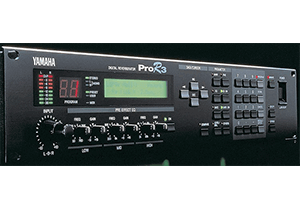 The Yamaha ProR3 marks a new era in Yamaha’s reverberation technology. Third-generation Yamaha digital signal processors (DSP) with 32 bit digital signal processing and high-performance 20 bit linear A/D and D/A converters provide unprecedented density and resolution, with breathtakingly dynamic impact.
The Yamaha ProR3 marks a new era in Yamaha’s reverberation technology. Third-generation Yamaha digital signal processors (DSP) with 32 bit digital signal processing and high-performance 20 bit linear A/D and D/A converters provide unprecedented density and resolution, with breathtakingly dynamic impact.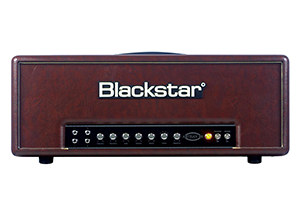 The Artisan 100 is a truly unique and versatile amplifier. The classic EL34 / 100W design of this amplifier is deceptively simple in operation and yet highly flexible in functionality and tone. The traditional control layout is hugely enhanced by the addition of the unique Voice control. By altering both preamplifier and power amplifier characteristics, the 4-position Voice control will take the player on a journey through the evolution of classic guitar amplifier tone, from the earliest American designs through to the British amplifier invasion of the late ’60s
The Artisan 100 is a truly unique and versatile amplifier. The classic EL34 / 100W design of this amplifier is deceptively simple in operation and yet highly flexible in functionality and tone. The traditional control layout is hugely enhanced by the addition of the unique Voice control. By altering both preamplifier and power amplifier characteristics, the 4-position Voice control will take the player on a journey through the evolution of classic guitar amplifier tone, from the earliest American designs through to the British amplifier invasion of the late ’60s Bugera made the 1990 Classic the first guitar amp head that switches between full-throttle pentode or more harmonic triode (60W) modes. The tube amp's Clean and Lead channels have separate master Volume and Reverb controls. Bugera tossed in a dual-control footswitch others charge extra for. Using powerful economies of scale and advanced manufacturing, Bugera produced a value-priced amp head that puts biting British tone within range of anybody who ever lusted after it.
The 2-channel preamplifier design includes Bugera ECC83 and ECC83A preamp tubes for breathtaking punch and impressive gain. First-grade Bugera 5881 power tubes, offer comprehensive sound control. 2 integrated reverb effects and an effect loop with Volume control round off the Bugera 1990 amp head.
Bugera made the 1990 Classic the first guitar amp head that switches between full-throttle pentode or more harmonic triode (60W) modes. The tube amp's Clean and Lead channels have separate master Volume and Reverb controls. Bugera tossed in a dual-control footswitch others charge extra for. Using powerful economies of scale and advanced manufacturing, Bugera produced a value-priced amp head that puts biting British tone within range of anybody who ever lusted after it.
The 2-channel preamplifier design includes Bugera ECC83 and ECC83A preamp tubes for breathtaking punch and impressive gain. First-grade Bugera 5881 power tubes, offer comprehensive sound control. 2 integrated reverb effects and an effect loop with Volume control round off the Bugera 1990 amp head.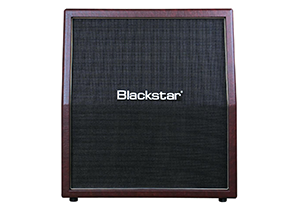 The oversized vintage Blackstar cabinets are handwired and built to the highest standards using the finest materials. Every care has been taken with the design of these cabinets to ensure that they produce the best possible sounds and will really last a lifetime.
The oversized vintage Blackstar cabinets are handwired and built to the highest standards using the finest materials. Every care has been taken with the design of these cabinets to ensure that they produce the best possible sounds and will really last a lifetime.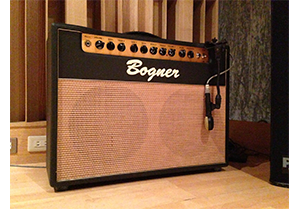 The sweet/rich sounding Reverb option of Shiva offers individual level controls for each channel, don't need reverb on the clean channel but need a bit on the high-gain channel, no problem dial in just the right level needed. The Shiva also has a Tube-buffered series FX-Loop. 1x12 Combo features a newly designed and revolutionary ported speaker enclosure that sounds very full, almost like a 4x12 cabinet. There is more than enough bass response to rearrange your living room furniture, if needed.
The sweet/rich sounding Reverb option of Shiva offers individual level controls for each channel, don't need reverb on the clean channel but need a bit on the high-gain channel, no problem dial in just the right level needed. The Shiva also has a Tube-buffered series FX-Loop. 1x12 Combo features a newly designed and revolutionary ported speaker enclosure that sounds very full, almost like a 4x12 cabinet. There is more than enough bass response to rearrange your living room furniture, if needed.